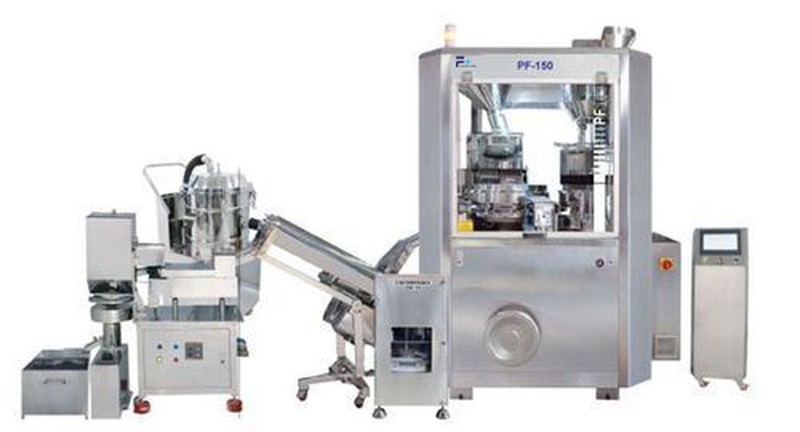A Comprehensive Guide to Capsules: Types, Materials, and Encapsulation Processes

1) What are capsules?
Capsules are typically made of gelatin or other suitable materials and contain the active pharmaceutical ingredient (API) in the form of a powder, granules, or pellets. A capsule filler machine & accessory equipment for capsule filling machine ensures that the required dosage is filled within the capsule. The capsule shell is designed to enclose the drug and facilitate its ingestion.
2) Capsule types
Capsules are oral dosage forms with hard or soft shells, available in various shapes and sizes, containing a single dose of one or more active ingredients. The process of encapsulation can be used for solid or liquid drugs. Capsules come in different types, including Hard Gelatin, Soft Gelatin, HPMC, Pullulan, Starch, Enteric, and Metallic Capsules


a) Hard Gelatin Capsule:
Hard gelatin capsule is a kind of capsule mainly composed of gelatin and purified water. Some coloured hard gelatin capsules also contain a small amount of Titanium dioxide and colourants.
| Name | Gelatin | Water | Titanium Oxide | Colourant |
| Transparent | 85% | 15% | / | / |
| Opaque | 83-84% | 15% | 0.5%-1.8% | 0.2-0.5% |
Gelatin hard capsules consist mainly of harmless, inexpensive, edible, and degradable gelatin, making it an ideal material. Titanium dioxide serves as an opacifier, while colourants add vibrant hues to the capsules. These capsules are dusted, cleaned, and given a glossy, polished appearance with the help of a capsule polisher. These additives are approved for food and medication use and are listed in JECFA. Both gelatin and Titanium dioxide have no set limits on acceptable daily intake, and the minimal amount of amino acids in gelatin can be disregarded. Gelatin has a long history of safe use for over a century, even with pets like cats and dogs.

b) Soft Gelatin Capsule: Soft gelatin capsules share a comparable composition with hard gelatin capsules, differing primarily in moisture content. To maintain elasticity and stability, plasticisers like Glycerol and Sorbitol are commonly incorporated. These single-piece capsules are manufactured directly from specialised equipment, allowing them to be filled with liquid. They possess similar characteristics to hard gelatin capsules. If acquiring production equipment is undesirable, many OEMs provide encapsulation manufacturing process services.

c) HPMC Capsule: The HPMC capsule primarily comprises HPMC and purified water. HPMC, short for HYDROXYPROPYLMETHYL CELLULOSE is a plant-derived cellulose resulting from hydrolysis and etherification processes. It finds widespread application in the food and pharmaceutical industries, being listed in authoritative pharmacopoeias globally.
Since HPMC originates from plants, it qualifies as a vegetarian capsule, making it eligible for certification and facilitating access to the vegetarian market.

d) Pullulan Capsule: The primary constituent of Pullulan Capsules is Pullulan combined with purified water. Pullulan is a water-soluble mucopolysaccharide, an approved food additive, also listed in JECFA. Its remarkable film-forming properties and other outstanding characteristics have made it an excellent choice for capsule production, supplanting animal gelatin to create pure, natural, and vegetarian empty capsules. It is naturally derived through Tapioca fermentation, making it eligible for both Pullulan vegetarian and organic certifications, satisfying the highest customer demands.
Furthermore, Pullulan capsules boast remarkably low moisture levels and exceptional toughness, rendering them suitable for housing water-sensitive medications.
e) Enteric Coated Capsules don’t fall under a specific category but are produced by applying an enteric coating to common capsules or through other processing methods. The unique attributes of these capsules are closely linked to the materials used in their construction. They are primarily designed to release medication in the intestine, as certain drugs may cause stomach irritation, get degraded by stomach acid, or exhibit enhanced efficacy in the intestines.
The underlying principle is that the enteric coating allows the capsule to dissolve solely in the alkaline environment of the intestinal tract.
Enteric coatings can be made from various materials, including fatty acids, waxes, and shellac, plastics, and plant fibres. It is worth noting that some of these materials, like those containing phthalates, may pose safety concerns. Nevertheless, due to legal regulations and growing consumer health awareness, their use has been reduced. If adherence to strict safety standards is essential, please verify the coated material of Enteric Coated Capsules.
The right pharmaceutical equipment, like an automatic capsule filling machine can increase productivity and quality significantly. To delve deeper into the encapsulation procedures of hard gelatin and HPMC capsules, as well as soft gel manufacturing and more, get in touch with F Plus Healthcare Technologies based in India. With their profound knowledge in this field, do not hesitate to reach out to the team at [email protected]. F Plus has consistently provided pharma technologies and process equipment to various countries including Turkey, Russia, Vietnam, Philippines, Thailand, KSA, UAE Morocco, Nigeria, Algeria, Kenya, Tanzania, Ethiopia, and beyond.

